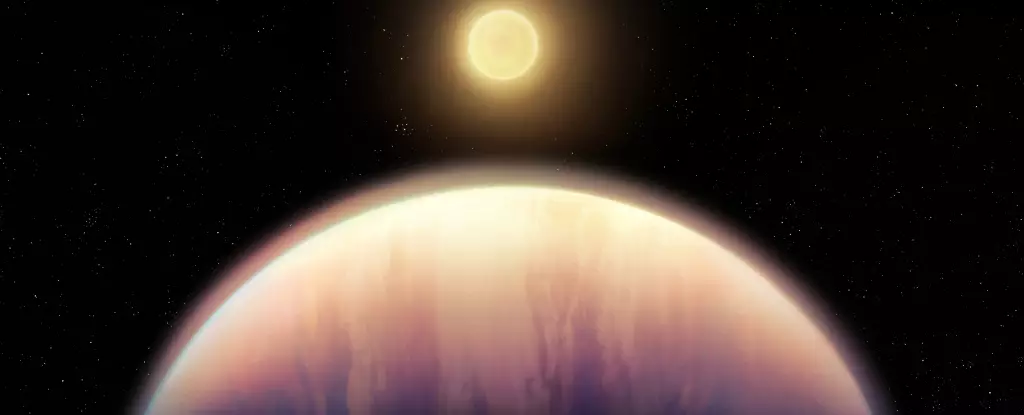The James Webb Space Telescope (JWST) stands as a beacon of scientific evolution, propelling our understanding of the cosmos to unprecedented heights. With its advanced observational capabilities, JWST’s contributions, particularly in the realm of exoplanet studies, have brought about transformative insights into planetary atmospheres. The telescope’s capacity to analyze starlight filtering through the gaseous envelopes of distant planets has revolutionized our approach to understanding the conditions that may support life beyond Earth.
One of the most significant breakthroughs came with JWST’s observations of the HR 8799 system. Located 130 light-years away in the constellation Pegasus, this system comprises four massive gas giants orbiting a young star, offering a unique glimpse into planetary formation and the potential for habitability. The telescope’s ability to detect carbon dioxide in the atmospheres of these gas giants suggests not only commonalities with our own Solar System but also raises profound questions about the similarities and differences that characterize planetary systems across the galaxy.
HR 8799: A Window into Planetary Formation
The HR 8799 system is remarkable for its direct imaging of multiple planets, a feat that has sparked excitement among astronomers and planetary scientists alike. Each of its four gas giants—HR 8799 b, c, d, and e—are estimated to be between five to ten times the mass of Jupiter, challenging previous assumptions about the formation of such large celestial bodies. Traditionally, giant planets are thought to form through either core accretion or disk instability. The significant carbon dioxide findings from JWST imply a favored formation method akin to that of Jupiter and Saturn, raising questions about the universality of these processes.
The implications of this research extend well beyond mere academic interest. They touch on fundamental questions about how planetary systems emerge and evolve in different environments. Are the mechanisms that formed HR 8799 representative of common evolutionary pathways for giant gaseous worlds? Or does each system exhibit unique characteristics shaped by their stellar nurseries? Through further study, we may better grasp the myriad factors influencing planetary development.
Innovative Technology Behind the Observations
The technological advancements encapsulated in JWST’s design are pivotal to its observational power. Utilizing its Near Infrared Camera (NIRCam) and coronagraph technology, JWST can effectively block overwhelming starlight, shedding light on planets that would otherwise remain hidden in the brilliance of their host stars. This capability marks a significant milestone in astronomical exploration, allowing scientists to delve deeper into the composition of these distant worlds than ever before.
What sets JWST apart is not only its ability to identify molecules like carbon dioxide but also its capacity to analyze the presence of heavy elements in the atmospheres of exoplanets. The revelations of high concentrations of heavy elements in the HR 8799 gas giants challenge previous assumptions and open new avenues for research into the nature of planetary atmospheres.
Linking Exoplanet Studies to Broader Cosmic Understanding
The significance of JWST’s findings goes beyond exoplanet research. As researcher William Balmer of Johns Hopkins University articulates, understanding the atmospheric compositions of distant planets enhances our grasp of our own Solar System. By contextualizing our existence within the broader expanse of the universe, researchers hope to identify markers of life and habitable conditions elsewhere, offering insights into the fundamental questions of existence.
As one of the most ambitious engineering feats in space exploration, JWST serves as a crucial mediator between our quest for knowledge and the mysteries of the cosmos. It stands not only as a space observatory but as a transformative tool that prompts us to rethink our place in the universe. By examining the atmospheres of exoplanets and comparing them with our own solar neighbors, scientists are constructing a more comprehensive narrative of how worlds form and potentially harbor life.
Ultimately, the James Webb Space Telescope exemplifies the essence of scientific inquiry—the relentless pursuit of knowledge and an eagerness to explore the unknown within a vastly intricate universe. The discoveries it continues to produce reaffirm our innate curiosity and the boundless possibilities that lie ahead in exoplanet exploration.

